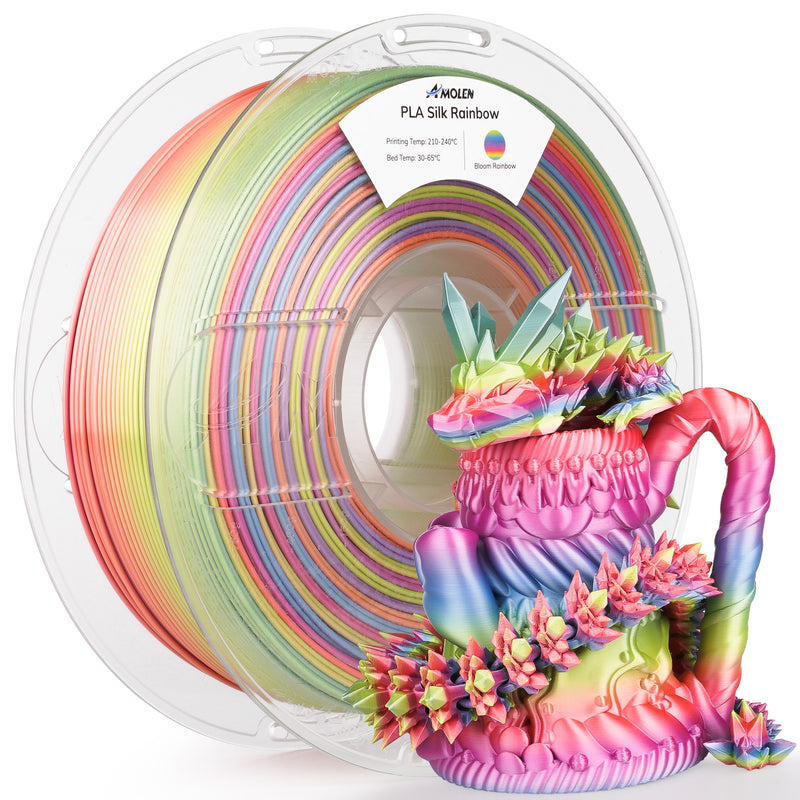Unlock the Secrets of PLA Filament: The Ultimate Game Changer for Your 3D Printing Journey!
In the realm of 3D printing, PLA filament has emerged as a favorite among enthusiasts and professionals alike. This remarkable material not only offers versatility but also combines sustainability with functionality. As we delve into the world of PLA, we'll uncover its unique properties, explore its diverse applications, and highlight the myriad benefits it brings to your printing endeavors. Whether you're a beginner or a seasoned pro, understanding PLA filament can significantly enhance your 3D printing experience. Join me as we unlock the secrets of this game-changing material!

Understanding PLA Filament
PLA, or Polylactic Acid, is a biodegradable thermoplastic derived from renewable resources such as corn starch or sugarcane. This eco-friendly composition sets PLA filament apart from traditional petroleum-based plastics. The manufacturing process involves fermenting the starches into lactic acid, which is then polymerized to create the filament. As a result, PLA filament is not only more sustainable but also less harmful to the environment. Its biodegradable nature means that when disposed of properly, it can break down over time, making it a responsible choice for environmentally-conscious creators.
Properties of PLA Filament
PLA filament boasts several key properties that make it an ideal choice for 3D printing. It offers excellent strength and rigidity while maintaining a certain degree of flexibility, allowing for the creation of intricate designs without compromising structural integrity. The typical printing temperature range for PLA is between 180°C and 220°C, which is relatively low compared to other materials. This makes it accessible for printers without advanced temperature control. Additionally, PLA adheres well to most print surfaces, minimizing the chances of warping during the printing process. Such characteristics make it not only user-friendly but also versatile for various projects.
Uses of PLA Filament in 3D Printing
The applications of PLA filament in 3D printing are vast and varied. From prototyping and educational projects to artistic creations, PLA is a go-to material for many. Hobbyists often favor PLA for creating figurines, toys, and decorative items due to its vibrant color options and ease of use. Professionals, on the other hand, utilize PLA for producing functional prototypes, as it allows them to quickly iterate designs while keeping costs low. I remember a friend who used PLA to create intricate models for a presentation; the results were not only impressive but also showcased the filament's ability to capture fine details.
Benefits of Using PLA Filament
The advantages of using PLA filament are numerous. One of the standout benefits is its ease of printing; beginners often find success with PLA due to its forgiving nature. The low warping tendency means that prints stay true to their intended shape, even in less-than-ideal settings. Additionally, PLA is available in a plethora of vibrant colors, allowing creators to produce eye-catching designs. Importantly, PLA is considered safe for home printing as it emits minimal odors and toxic fumes compared to other materials like ABS. This feature makes it suitable for families and educational environments, where safety is a priority.
Choosing the Right PLA Filament
When selecting the right PLA filament for your projects, there are several factors to consider. First, pay attention to the filament diameter; the most common sizes are 1.75mm and 2.85mm, so ensure compatibility with your printer. Next, consider the color options available; many brands offer a wide spectrum of hues, including transparent and metallic finishes. Lastly, check the quality and reviews of the filament brand to ensure that you are choosing a reliable product. By taking these factors into account, you can choose a PLA filament that best suits your specific needs and goals.
Exploring the Advantages of PLA Filament
In summary, PLA filament stands out as a versatile and eco-friendly choice in the world of 3D printing. Its unique properties, wide range of uses, and numerous benefits make it a top pick for both novice and experienced users. As you explore the possibilities of PLA, remember that experimentation is key—don’t hesitate to try out different colors and applications. Embrace the potential of PLA filament in your 3D printing journey, and watch your creative ideas come to life!







